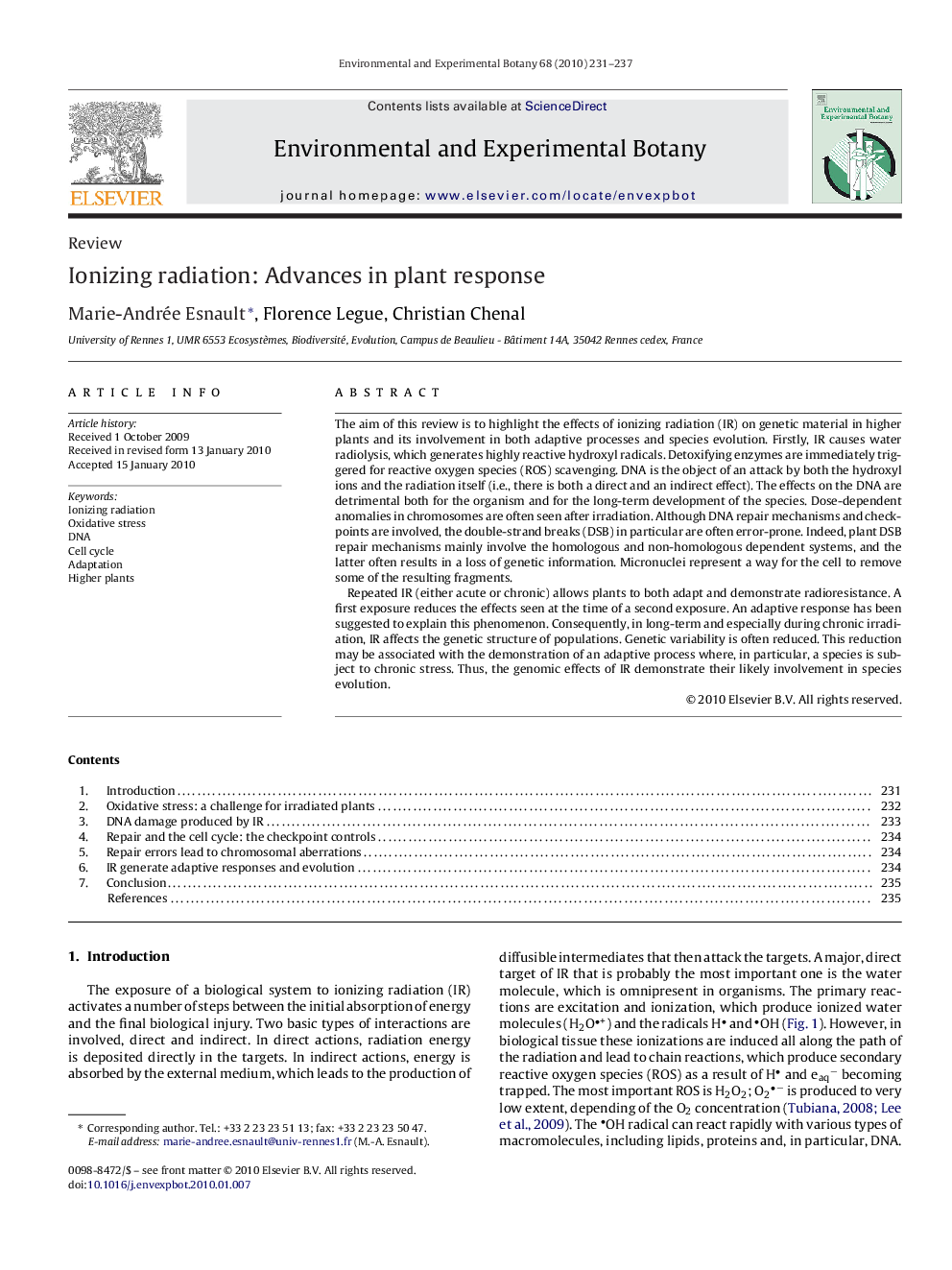| Article ID | Journal | Published Year | Pages | File Type |
|---|---|---|---|---|
| 4555374 | Environmental and Experimental Botany | 2010 | 7 Pages |
The aim of this review is to highlight the effects of ionizing radiation (IR) on genetic material in higher plants and its involvement in both adaptive processes and species evolution. Firstly, IR causes water radiolysis, which generates highly reactive hydroxyl radicals. Detoxifying enzymes are immediately triggered for reactive oxygen species (ROS) scavenging. DNA is the object of an attack by both the hydroxyl ions and the radiation itself (i.e., there is both a direct and an indirect effect). The effects on the DNA are detrimental both for the organism and for the long-term development of the species. Dose-dependent anomalies in chromosomes are often seen after irradiation. Although DNA repair mechanisms and checkpoints are involved, the double-strand breaks (DSB) in particular are often error-prone. Indeed, plant DSB repair mechanisms mainly involve the homologous and non-homologous dependent systems, and the latter often results in a loss of genetic information. Micronuclei represent a way for the cell to remove some of the resulting fragments.Repeated IR (either acute or chronic) allows plants to both adapt and demonstrate radioresistance. A first exposure reduces the effects seen at the time of a second exposure. An adaptive response has been suggested to explain this phenomenon. Consequently, in long-term and especially during chronic irradiation, IR affects the genetic structure of populations. Genetic variability is often reduced. This reduction may be associated with the demonstration of an adaptive process where, in particular, a species is subject to chronic stress. Thus, the genomic effects of IR demonstrate their likely involvement in species evolution.
